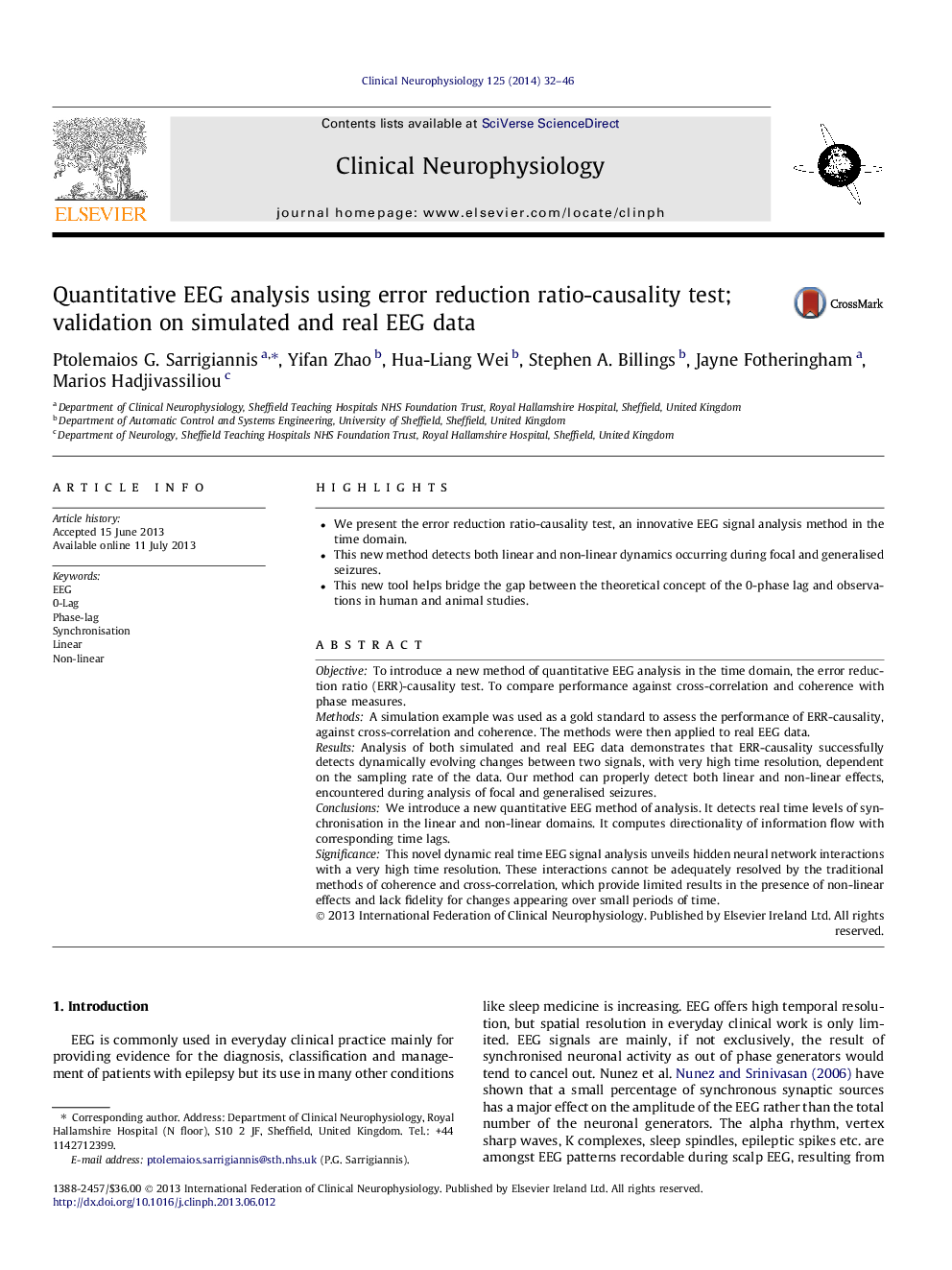| Article ID | Journal | Published Year | Pages | File Type |
|---|---|---|---|---|
| 3043631 | Clinical Neurophysiology | 2014 | 15 Pages |
•We present the error reduction ratio-causality test, an innovative EEG signal analysis method in the time domain.•This new method detects both linear and non-linear dynamics occurring during focal and generalised seizures.•This new tool helps bridge the gap between the theoretical concept of the 0-phase lag and observations in human and animal studies.
ObjectiveTo introduce a new method of quantitative EEG analysis in the time domain, the error reduction ratio (ERR)-causality test. To compare performance against cross-correlation and coherence with phase measures.MethodsA simulation example was used as a gold standard to assess the performance of ERR-causality, against cross-correlation and coherence. The methods were then applied to real EEG data.ResultsAnalysis of both simulated and real EEG data demonstrates that ERR-causality successfully detects dynamically evolving changes between two signals, with very high time resolution, dependent on the sampling rate of the data. Our method can properly detect both linear and non-linear effects, encountered during analysis of focal and generalised seizures.ConclusionsWe introduce a new quantitative EEG method of analysis. It detects real time levels of synchronisation in the linear and non-linear domains. It computes directionality of information flow with corresponding time lags.SignificanceThis novel dynamic real time EEG signal analysis unveils hidden neural network interactions with a very high time resolution. These interactions cannot be adequately resolved by the traditional methods of coherence and cross-correlation, which provide limited results in the presence of non-linear effects and lack fidelity for changes appearing over small periods of time.
